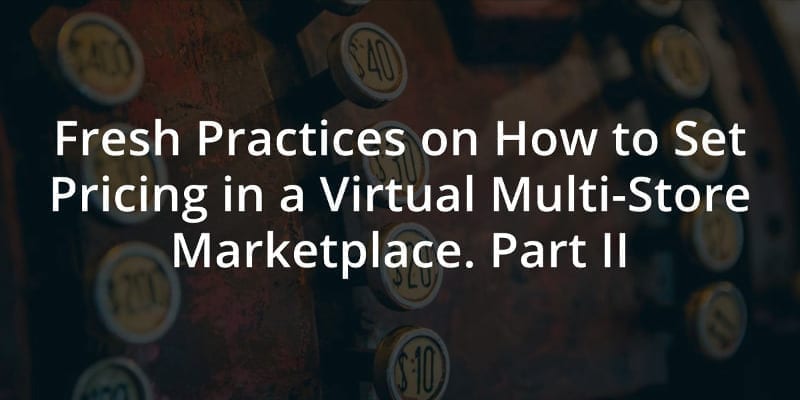Fresh Practices on How to Set Pricing in a Virtual Multi-Store Marketplace. Part II
As the Deloitte revenue and costs’ profit tree shows, pricing is an important component of the online marketplace profit-building process:
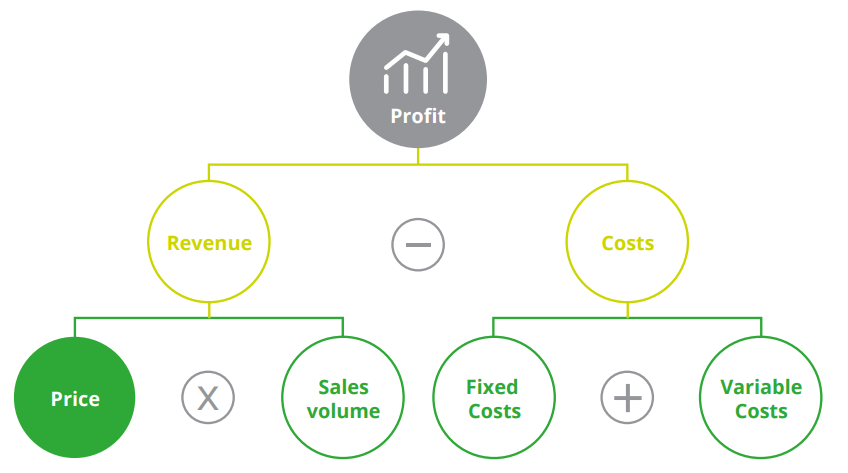
It is one of the main deciding factors for online shoppers: 86% say it is important to be able to compare prices from different sellers.
Besides, pricing influences the expenses that you can cover.
One of the main pricing difficulties is keeping prices updated for a large number of items that online marketplace trading centers usually have. Amazon and some other online shopping mall platforms have implemented automatic pricing systems and can change prices several times a day.
However, there is no single approach that works for all virtual multi-store marketplace platforms.
A very deep understanding of your ecommerce marketplace product value, customers’ demand, and the competitors’ pricing methods is a must to choose the pricing strategy that would be helpful in increasing your listings’ revenue performance.
You may also be interested:
multi vendor transaction fee for marketplace platform
online marketplace center promotion
1. Pricing Strategies and Tactics
Pricing strategies help to determine the relevant pricing point for your clients, at which you maximize your profits.
The strategies are built around your costs and the value you provide, your customers’ demand, and the pricing approach that is relevant to your market.
1.1 Cost-Based Strategy
This method is based on the total costs you have and the profit amount you expect.
Total costs include two types of costs:
● fixed costs are the regular expenses that you have regardless of how much you sell: rent or salaries;
● variable costs are increasing together with your sales growth: extra labor, promotion, shipping, packaging.
To avoid loss, your price must be higher than the variable expenses, while each sale makes a contribution towards covering your fixed costs.
When you’re picking a per-item price, define a profit margin amount you expect and use this cost-based pricing formula:
Unit Cost = Variable Cost per Unit + Fixed Costs / Total Units to Be Sold
Also, there is the cost-based pricing online calculator.
This strategy allows the setting of prices without in-depth customer or market research, ensures a minimum return on each product sold and helps to track costs growing.
However, it doesn’t show if your clients are willing to pay more for the product and doesn’t take into account the demand changes.
It fits the multi-vendor marketplace centers with the large product volumes.
1.2 Value-Based Pricing
This strategy is based on the real benefits and perceived value that your customers have in connection to your online marketplace trading center.
It is hard to implement since it requires a deep understanding of your clients, and the valuation of your features and services by different segments of consumers.
However, it helps to set the highest possible price.
There is no single formula to calculate pricing with this strategy, but the set of steps:
1. Implement product preference analysis to define the customer value definition.
2. Use price sensitivity analysis: the real price points that customers are willing to pay and the part that the price plays in their purchase decision.
3. Focus on a single segment or determine a separate value-based price for each segment you work with.
4. Define the unique feature of your online shopping mall platform that adds value to the customers and estimate its dollar value through qualitative customer interviewing or survey.
That value can be: convenience, the speed of delivery, or the wide sellers’ choice.
Amazon is one of the ecommerce marketplace solutions that use this pricing strategy.
As the research shows, one of the main multi-vendor marketplace center priorities is fast delivery.
The online shopping mall platform defined the value for the certain segment customers, things for babies: delivery time.
Delivery time dramatically affects the segment customers’ willingness to pay:

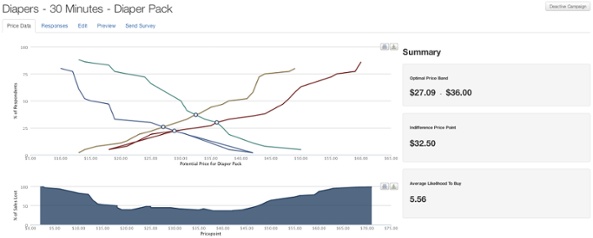
1.3 Dynamic Pricing
Incomplete data on the customers’ demand and its peaks is the main issue of online marketplace trading centers when setting pricing.
Dynamic pricing method is based on algorithms and helps to keep your pricing up-to-date towards customers’ demand and competitors’ prices.
Unlike static pricing, which is constant over several hour periods, dynamic pricing changes in response to certain criteria: demand, competition, seasonality.
The Berkeley University research shows the method advantage:
Robustness of the pricing strategies to the demand changes, static pricing:
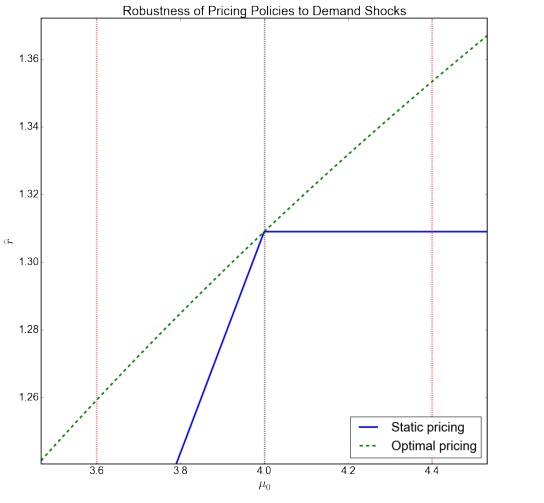
Robustness of the pricing strategies to the demand changes, dynamic pricing:
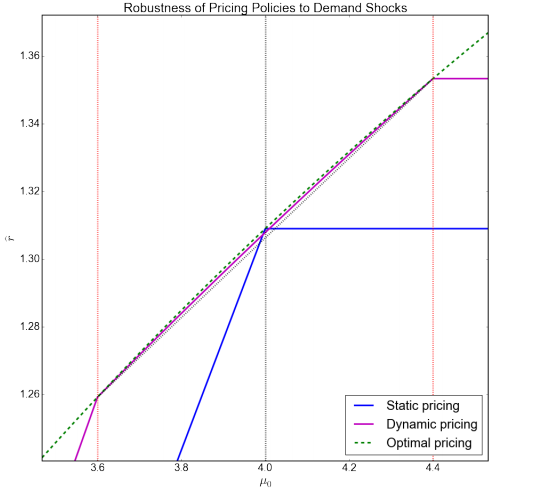
Uber is using dynamic pricing to capture “demand surge”, while Lyft is utilizing it to define the “prime time” when its service is in demand the most.
Airbnb is using this method to help hosts by tracking peers’ pricing through its Smart Pricing tool:
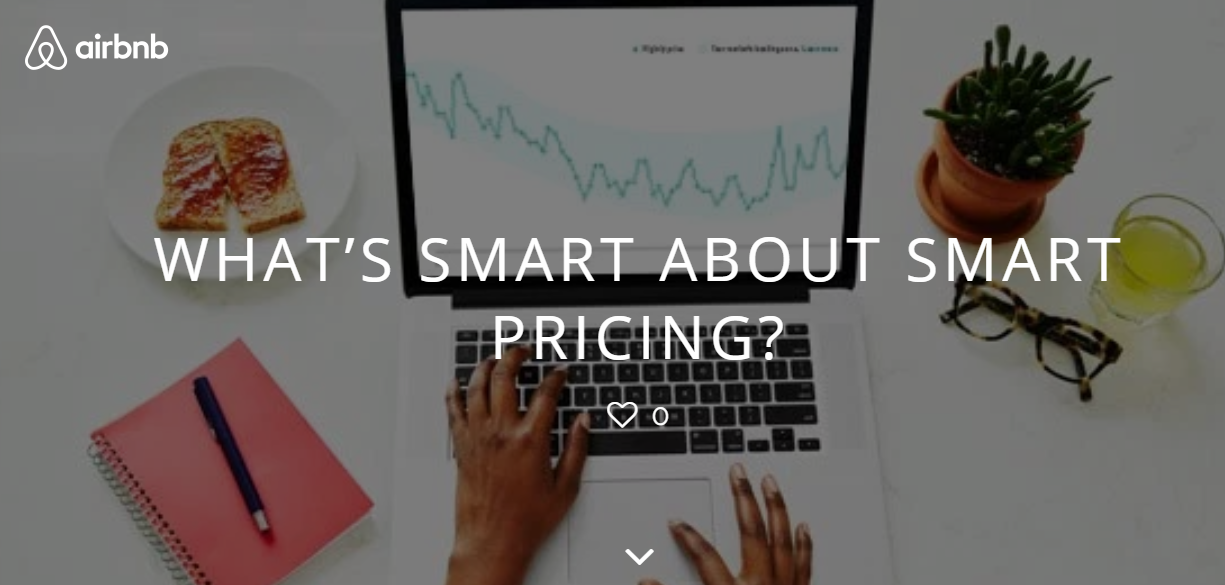
Besides tracking the hosts’ prices, the tool shows:
● the frequency that competitors’ listings get booked at;
● the level of interest that listings are generating;
● the demand changes in an area, by taking seasonality, special events and hotel prices into account.
Also, the tool automatically changes pricing if the listing is updated: if hosts add amenities, such as WiFi, or a positive review.
However, The Northeastern University research shows the flip side of the method. Amazon sellers that use algorithmic pricing can tweak the price 1-8 times per day, leading to the following issues:
● it’s harder for online buyers to track prices over time and to find the best deal;
● such virtual multi-store marketplace platform sellers won the buy box more frequently, accumulate higher sales volume and more customer feedback, and later, even if they raised their prices, they might still win the buy box.
1.4 Pricing Tactics
These are the techniques that help you to tweak pricing to your short-term objectives.
Price positioning sets pricing below the market to compete against established sellers.
The multi-vendor marketplace center Etsy set 50% fees to acquire the sellers which were already selling on ecommerce marketplace solutions Amazon or eBay.
Discounting helps to sell old stock, increase Average Order Volume or response to competitive pricing tactics.
Amazon created a Discount Provided by Amazon program, to compete with low-cost rivals by forcing discounts on its third-party sellers. The online marketplace trading center covers the difference between the discount and the normal price for the vendors.
A Discount Provided by Amazon program:
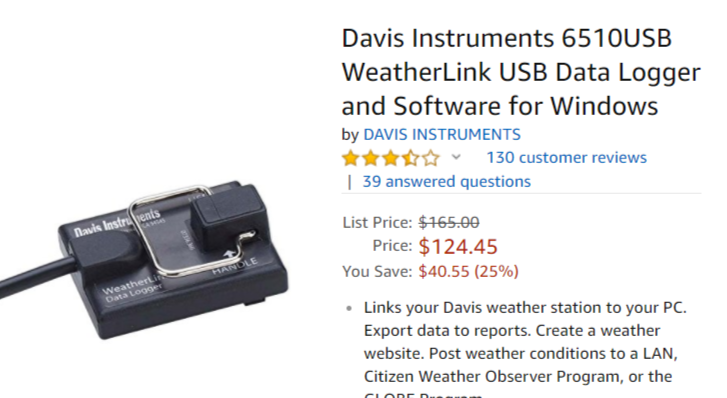
Loss-leader tactic implies selling a product at a loss-making price to attract customers who will also buy more profitable products.
It helps to upsell, cross-sell, increase the total shopping basket value, and stimulates retention.
Besides, there are tactics which online shoppers perceive unfair, and that is better to avoid, such as drip pricing: when a headline price is advertised at the beginning of the purchase process but is followed with additional fees.
Airbnb used such a technique but was forced by the court to display the services as part of the headline price.
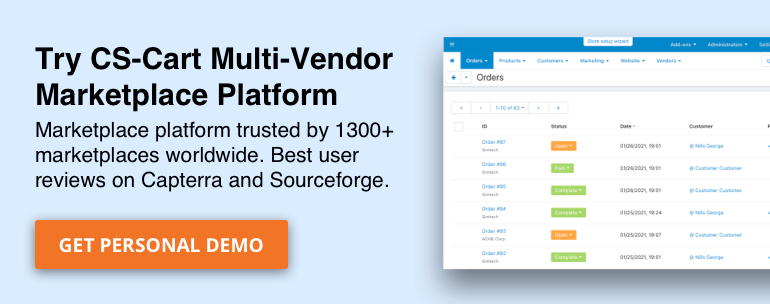
2. Pricing-Influencing Factors
Besides the pricing strategies, it’s necessary to take into account your virtual multi-store marketplace platform type and the level of pricing transparency you enable to your clients.
2.1 Marketplace Type
Service eCommerce marketplace solutions pricing strategies are tweaked to the service characteristics.
Car-sharing online multi-vendor platforms use load-dependent pricing and are setting the price on the basis of the available drivers’ number. Besides, such platforms set a time and distance-dependent base price.
The online shopping mall platform Uber is setting pricing on the basis of the expected earnings per ride, expected idle time per ride, and the entry rate of drivers.
Zopa, lending and borrowing C2C-marketplace, offers personalized rates to each borrower:

However, the multi-vendor marketplace center sets the constant pricing range for investors.
Physical product online marketplace trading centers charge a certain percentage, as Etsy 3.5% or Amazon 10%, or, like eBay, offer a different pricing model, auctions: the ability to set a unique price for each item and to see how much buyers are willing to spend.
2.2 Price Setting Transparency
Your online shopping mall platform clients should understand, why one product is more expensive than the other; it is good if your sellers are also adopting such an approach.
As European Commission pointed out, the virtual multi-store marketplace platform Airbnb has many unclear price components besides the basic service fee: cleaning fee, additional guests fee which are set chaotically by sellers:
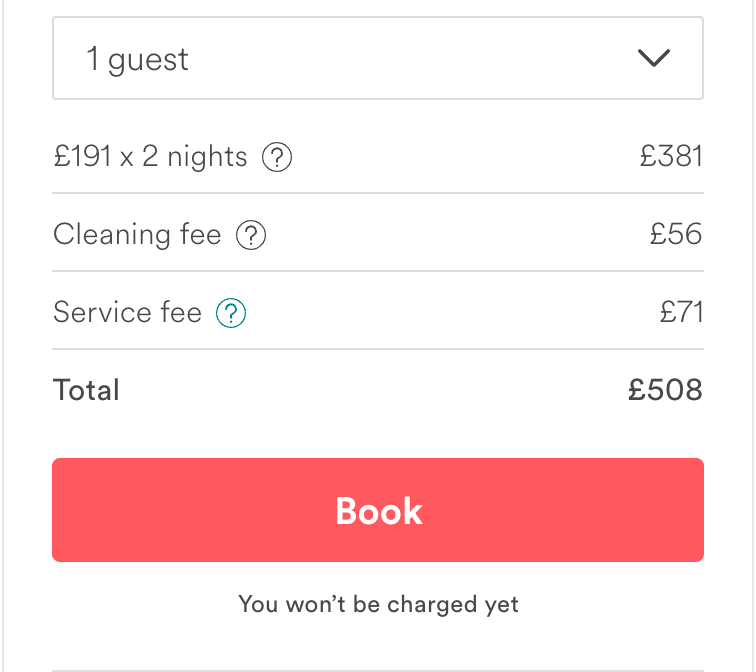
The online shopping mall platform offering standardization and your marketplace pricing policies can help to increase pricing transparency for both sellers and customers.

3. Pricing Policies for Sellers
3.1 Setting Pricing for Vendors
There are some following factors that influence price setting for sellers.
Keep in mind your sellers’ marginal costs.
OpenTable, the eCommerce marketplace solution for restaurants, where margins are very thin, established low pricing for sellers with no monthly fee:
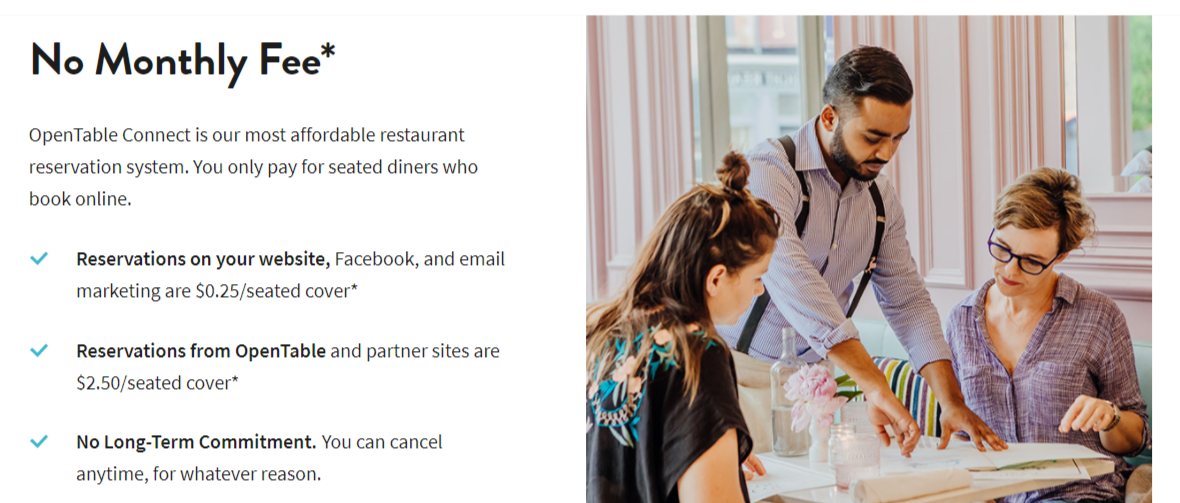
A digital goods’ virtual multi-store marketplace platform E-Junkie sets a relatively large monthly fee, since digital goods, once created, can be sold many times with no further costs:

If your multi-vendor marketplace center sells different types of products that vary in marginal costs, set different pricing for different product categories, like Amazon:

Your multi-vendor marketplace value for sellers is also a pricing factor, and may include the following components:
- customer service and additional selling channels, like Social Media;
- return and shipping support;
- personalized shop for each vendor.
The online marketplace trading center Amazon is offering a fulfillment ecosystem as a value-added service and is charging sellers depending on which fulfillment option they use.
Establish different pricing for different seller types, professionals with multiple daily transactions, and newcomers with transactions twice a year, like Amazon:
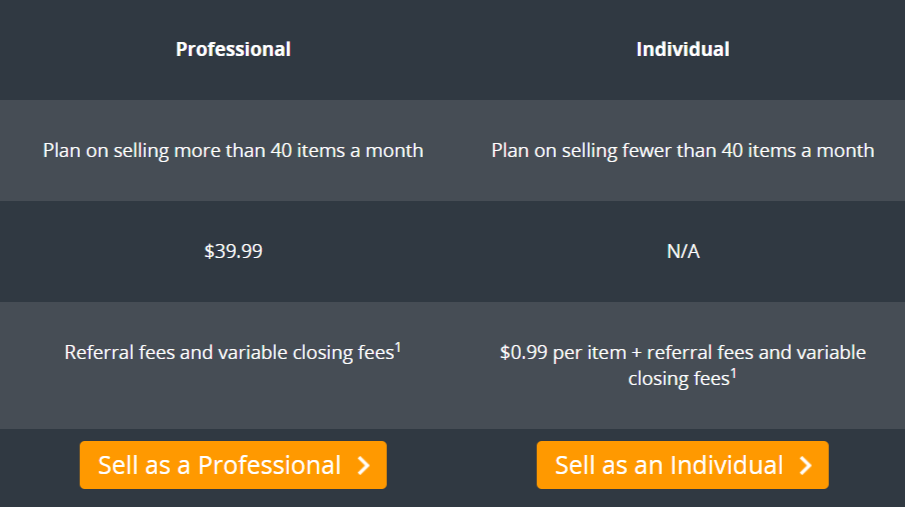
3.2 Control and Influence Sellers’ Pricing Strategies
Your sellers’ pricing affects your online shopping mall platform customers’ acquisition and retention significantly.
Thus, monitor your vendors’ pricing to remain competitive.
Besides, establish price regulation within your platform to avoid pricing wars.
Uber controls the ride’s pricing completely, while Etsy prohibits the pricing coordination between sellers.
Walmart’s automated price monitoring system catches its pricing policies violation, and the virtual multi-store marketplace platform unpublish the listing and notify the seller in order to fix it.
The eCommerce marketplace solution Amazon guarantees the best offers to its shoppers through the price parity: vendors are obligated to offer the price that is at or below the lowest total price offered on any other channel.
Thus, the multi-vendor marketplace center is not only monitoring pricing on the platform but also discovering if its sellers set lower prices anywhere else. In this case, the online shopping mall platform automatically reduces their pricing to meet or beat the lowest price.
Also, such strict regulations and monitoring help to prevent price dispersion: variation in prices across sellers of the same item. As the Online Price Dispersion Research shows, many online sellers don’t adjust prices frequently, thus the regulation from the online marketplace trading center side is necessary.
Many sellers lack the experience on how to price their listings. Thus, you may provide your vendors with education about pricing.
Besides, ensure that your sellers understand your ecommerce marketplace pricing strategies and the benefits of complying with them, like top spots winning.
The virtual multi-store marketplace platform Amazon allows sellers to win the Buy Box, where most sales are happening, in case if they match the online shopping mall platform pricing requirements:
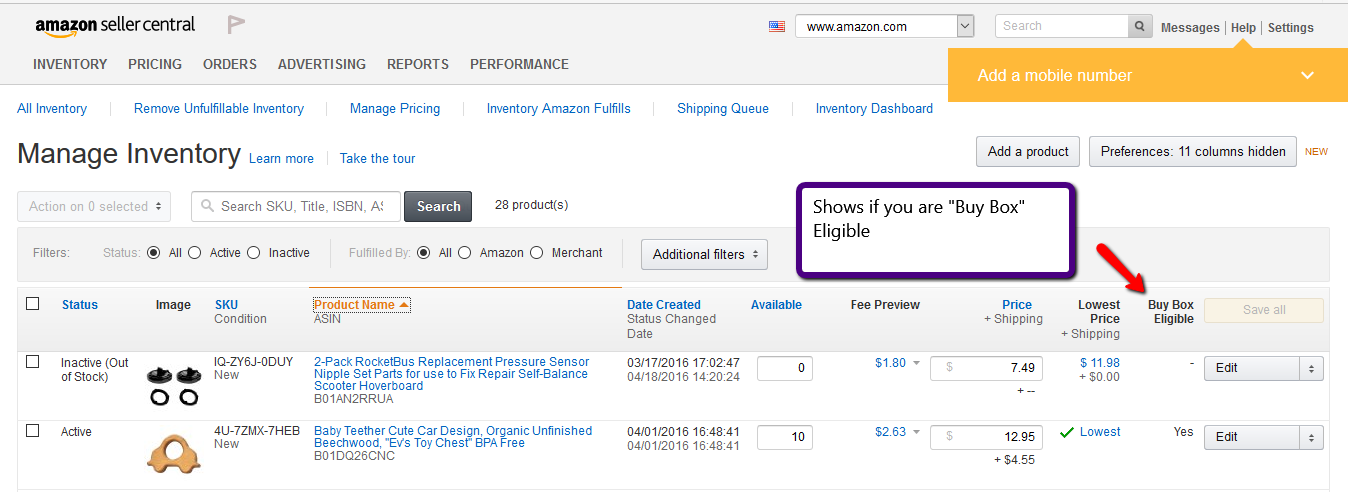
According to the Deloitte research, of all variables in the profit equation, price has the highest impact on profit:
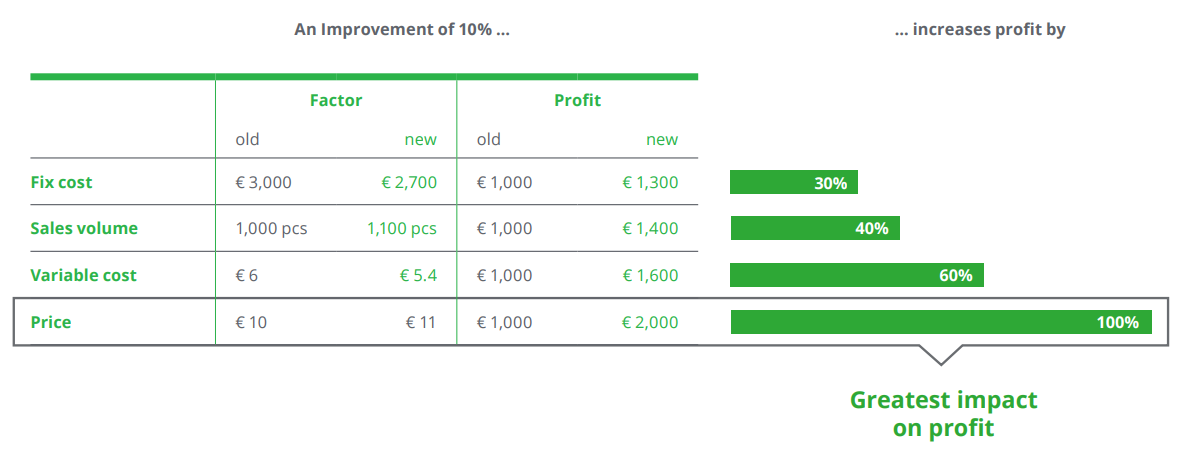
Thus, it remains the crucial element of the online marketplace development.
As per the recent e-Commerce pricing trends, fixed pricing will be more and more inferior todynamic pricing, while the development of data collection technologies enablesdata-driven pricing: accurate market data becomes a key to perfect pricing strategy.
Besides the role of technologies in the price setting, taking into account the customers’ subconscious pricing perception helps to assess and increase their willingness to pay, according to Deloitte research. Personalized pricing is an important online retail trend as well.
Thus, to improve your pricing model,a combination of methods should be used. Such an integrated approach helps matching constantly-changing customers’ demand, while monitoring, supporting and educating your sellers on their pricing strategies.

Yan Anderson is the Head of Content Marketing at CS-Cart with over 10 years of experience in the eCommerce industry. He's passionate about explaining complicated things in simple terms. Yan has expertise in building, running and growing eCommerce marketplaces. He loves to educate people about best practices, new technologies, and trends in the global eCommerce industry.
